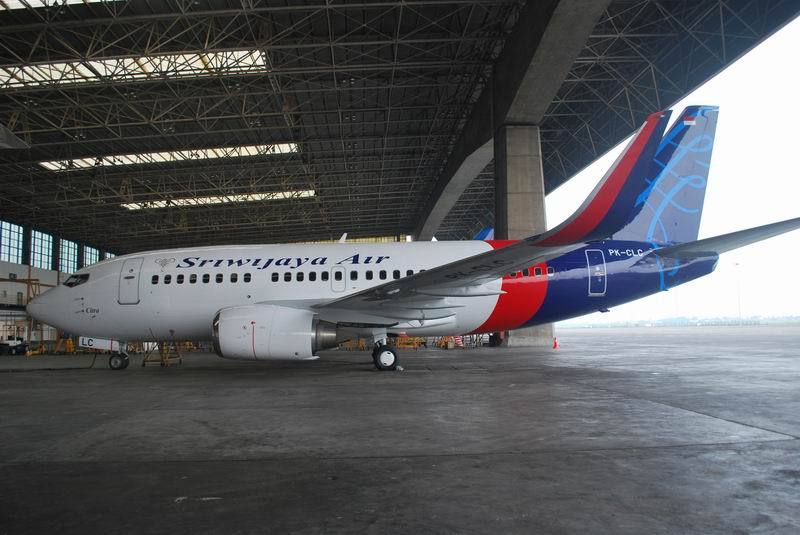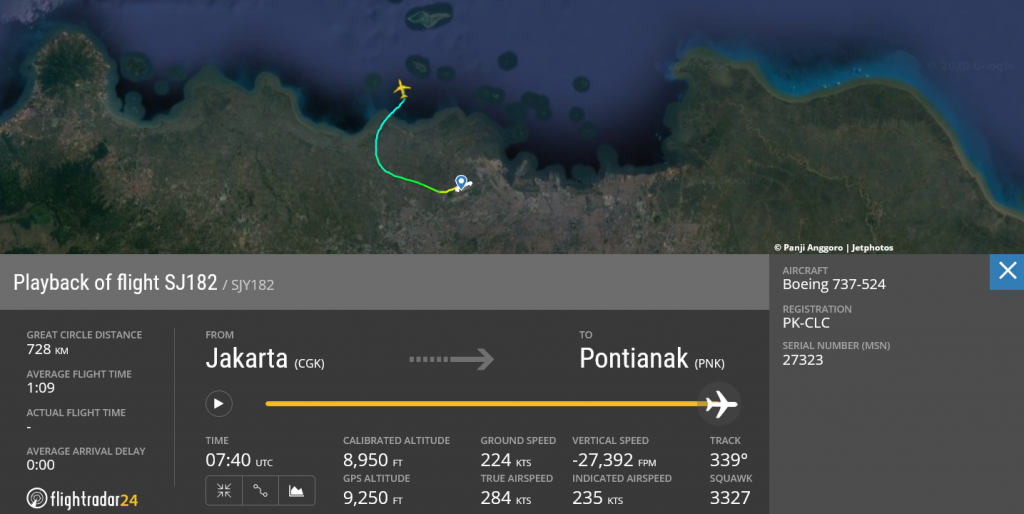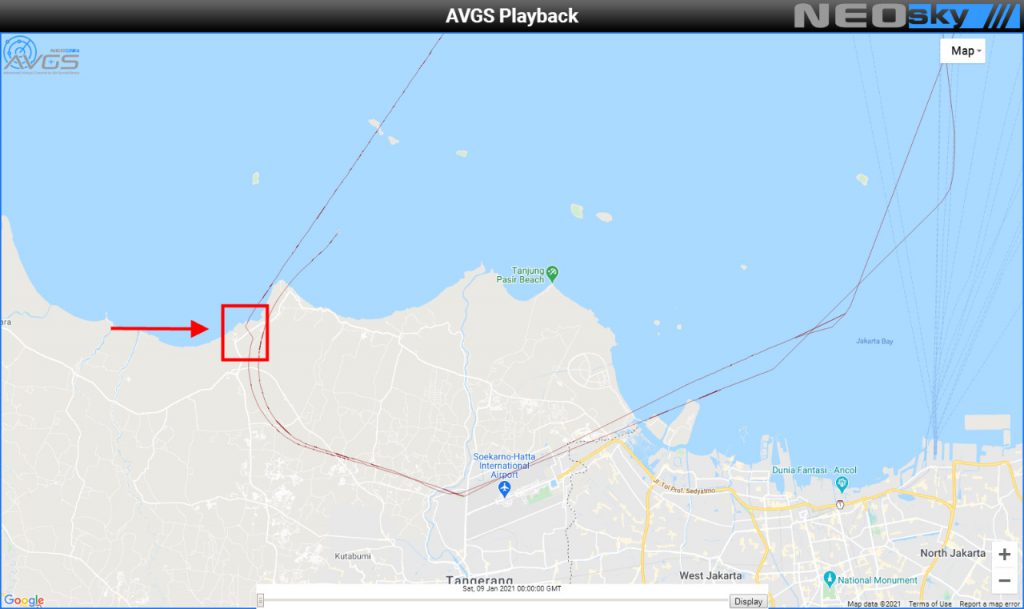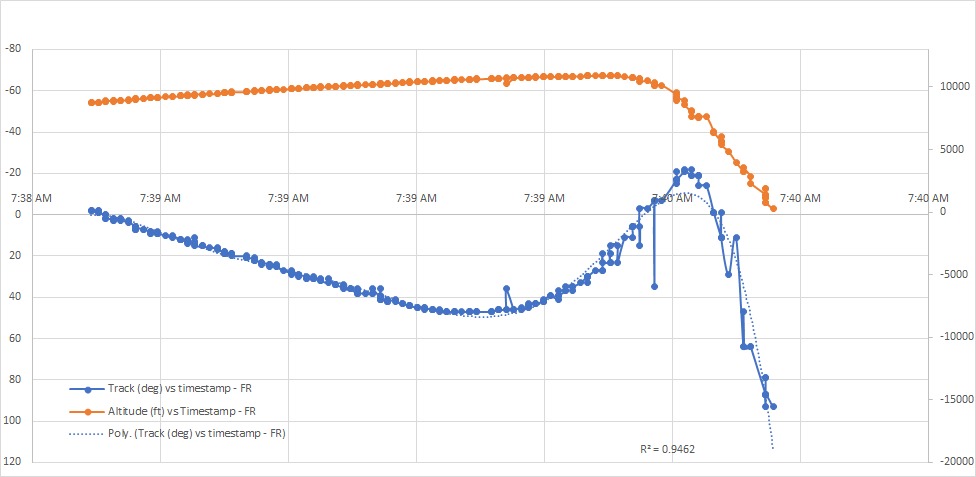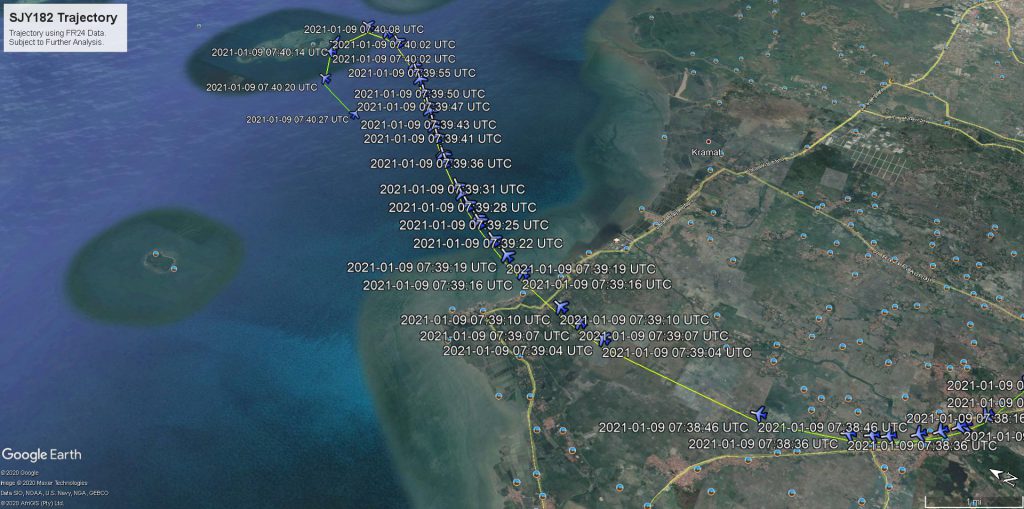As we near 1 month to the day Sriwijaya Air Flight SJ182 operated by PK-CLC went down, the investigators are preparing to release their preliminary report. With different speculation as to the causes, and my lack of written analysis, let’s summarize what happened and what we know so far.
The NTSC has interviewed the air traffic controllers, aircraft maintenance technitions and flight dispatchers, in addition to collecting and analyzing radar data and ADS-B data. Some pieces of the aircraft have been retrieved, and the flight data recorder has been obtained, downloaded and analyzed. In addition, aircraft maintenance logs, crew training information and weather information has been collected.
The aircraft departed Jakarta’s Soekarno-Hatta International Airport (WIII/CGK) at 1436 local time with 2 pilots, 4 cabin crew and 56 passengers. The flight had been delayed for about 1 hour due to weather within the airport’s vicinity.
Initial Data
Automatic Dependent Surveillance – Broadcast (ADS-B) is a system where the aircraft continuously broadcasts data such as aircraft position and altitude, and the signals are then taken and processed by ground receivers. The aircraft continued to transmit ADS-B data until it reached 250ft, and this indicates electrical power was still available on the aircraft until it hit the water.
Electrical power is normally generated through generators on the aircraft’s engines when in flight, while this indicates the engines were still running, electrical power can be obtained from the auxiliary power unit in the tail at lower altitudes. However, confirmation that the engines were still running came from the Flight Data Recorder and the retrieved remains of the aircraft engines. The condition of the compressor and turbine blades are consistent with the engines still running at the time the aircraft hit the water.
Of the 2 blackboxes, the Flight Data Recorder was recovered from the crash site and the NTSC has stated that 370 parameters were recorded for 27 hours of flight time covering 18 flights including the accident flight. The Cockpit Voice Recorder was recovered but is missing the memory module that stores the data. The search for the Cockpit Voice Recorder is continuing.
ADS-B data analysis
While ADS-B data is wonderful for those outside accident investigations to have a look into the flight path of accident flights, one must understand its limitations. When looking at speed, most ADS-B sites show groundspeed, not airspeed. Airplanes fly with airspeed, and groundspeed is airspeed plus or minus the effect of wind. Airspeed data can be broadcast, depending on the aircraft type, but those using free Flightradar24 access will not have this data shown.
Flightradar24 did publish the granular data of SJ182, which has better time data resolution than available to free access accounts on the site. I also have my own ADS-B receiver system that usually has better time data resolution, but on this flight, somehow we missed the critical data from the moment the aircraft started to lose altitude for the rest of the flight. However, data between the two systems were cross-checked and deemed to be consistent.
A caveat exist for when using 737-300/400/500 ADSB data for analysis, in that the aircraft position for these aircraft are usually not generated by Global Navigation Satellite Systems. While some 737 classics have extensive modification to transmit GPS position data, this particular aircraft appeared to have been transmitting its aircraft position based on the aircraft Flight Management Computer position, calculated through its inertial reference system corrected by radio navigation calculations. This can result in large an rapid position shifts transmitted through the ADSB, but our initial analysis did not find “position correction shifts” occurring on this flight. Alas, for analysis, what we look for is the trend (position changes) from each data point, rather than treating the position as absolutely correct.
We can see here on a previous flight in that day by the same aircraft, PK-CLC, showing an ADSB position shift due to an aircraft position correction by the Flight Management Computer, likely due to an retuning of a radio navigation station either automatically or selected by the pilot. While we didn’t find any such shifts on the accident flight (also shown in the diagram above).
With the limitation in mind, I looked at the 2D plots of the flight path in horizontal and vertical. From this we can see the following:
This shows the track of the aircraft as it left the right hand turn on departure, showing a progressive turn to the left, before reversing direction in the dive.
When we look at the 3D plot of the flight path, we can better visualize the aircraft had entered an upset position. The corkscrew nature of the path revealed the slow but increasing roll to the left, with the aircraft losing its climb rate the further it went in the roll, until eventually an excessive bank angle resulted in possibly a rollover and the aircraft dove.
However, looking at the vertical plots, it appears that after the upset the crew attempted to recover the aircraft. The detection of extreme climb rates as the aircraft dived, CAN indicate crew attempted recovery with buffeting causing the erroneous large climb rates. The vertical speed data is generated through the aircraft’s inertial reference system, and wild gyrations can be a result of the IRS normal operating limitations being exceeded. But for a definitive answer for this, of course, we have to look at the Flight Data Recorder, which at the time of writing, is not yet available to the public.
How does this compare with the data released by NTSC in the parliamentary hearing on 3rd February 2021?
Well it’s the same, BUT, we now have better context on what happened.
If I understand this correctly, at 13:38:51 the crew requested to the ATC to go on a heading of 075 instead of following the standard instrument departure path. I assume this was approved. However, at 13:39:01 while passing 9000ft, the ATC instructed the aircraft to stop climbing at 11,000 feet. The aircraft then shallowed out its right hand turn, and the aircraft had straightened out at 14:39:54 and was passing 10,700ft when ATC instructed them to climb to 13,000ft. This instruction was read back by the pilot 5 seconds later at 14:39:59 while passing through 10,800ft. At this time, the aircraft was already turning left, and its climb rate was dropping, the aircraft reached a maximum altitude of 10,900ft at 14:40:05.
What happened next, is difficult to write and is horrific. The aircraft increased its descent rate, and reached 10,100ft at 14:40:12, and we can see the groundspeed to have increased. The aircraft then possibly flipped over, entering a rapid steep dive, and the aircraft is assumed to have corrected its roll angle, as it went relatively straight until the last recording at 14:40:28 at 250ft, with a groundspeed of 385 knots.
Up to this point, everything has been relatively similar to and be consistent with the guesses of:
1. Cancelling the SID path and requested a heading or a direct-to point.
2. Aircraft was light, and the initial climb angle may have been due to the light weight.
3. A steeper than usual climb angle while turning, may have caused some form of crew disorientation and the climb rate was corrected as the aircraft passed 10,000ft, and expectedly, accelerated.
The chain of events could have precipitated crew disorientation, but while the path shows the tell-tale signs of it, it is by no means a conclusion. It is a calculated guess at best and other possible causes such as excessive engine thrust asymmetry can yield a similar corkscrew.
Clues were apparent in the NTSC depiction of the flight path and crew-ATC communications. However, the NTSC also revealed the following:
- Crew usually would have put in the standard instrument departures and its altitude constraints into the Flight Management Computer before departure.
- Crew appeared to have set the autopilot to follow the FMC by selecting LNAV and VNAV mode (Lateral Navigation and Vertical Navigation), however;
- When ATC requested the crew to halt their climb at 11,000, the crew appeared to have changed the autopilot mode to HDG SEL (Heading Select) and VS (Vertical Speed).
Why they did this, we need the CVR to fully understand, however it could be explained by the heading request by the crew and the ATC asking to hold their climb at 11,000. Remember, this aircraft was climbing rapidly below 10,000ft.
Prior to this, I had looked at the crew procedures, suspecting disorientation, having 2 crew with good instruments in front of them should reduce if not eliminate that risk. However, at 10,000ft, the pilot monitoring (not the one flying) has to switch off the landing lights, decide whether to switch off the fasten seatbelt sign off or keep it on, and then check for the cabin pressurization system to make sure the cabin is being pressurized to prevent hypoxia at altitudes higher than 14,000ft. This procedure can take between 10 seconds to 30 seconds depending on the circumstances. During this time, the pilot monitoring has to take his/her eyes off the flight instruments ahead of him, and look at the parts of the overhead panel to complete those duties. If the pilot flying is already disorientated at this stage, he has no body the warn him.
What probably took the pilot monitoring’s eyes off his flight instruments for longer than usual, can be due to the additional ATC instructions to change the climb limit from 11,000ft to 13,000ft, where the change has to be selected into the autopilot panel, and be verified by the other pilot. This takes both crews eyes off the instruments for several seconds. While this is nothing unusual and is usually perfectly safe, given the wrong set of circumstances, it can lead to reduced situational awareness. Another possibility being looked into are possible asymmetric thrust between the two engines. If asymmetric thrust existed, it had to happen just at the wrong time, that is as the aircraft passed 10,000ft, with ATC instructions to hold the aircraft’s climb from 11,000 to 13,000, and the passing 10,000ft procedures, and yes, one more thing, altimeter change from QNH (local pressure) to standard pressure, which in Indonesia would occur at 11,000ft on climb. Had it happened at another time, the crew may have noticed it and conducted the necessary mitigation. However, again, this is a “what if” guess, albeit again, a reasonable and calculated one.
What can we summarize?
- Aircraft hit the water in one piece: If it broke up prior to the dive, we would be seeing a much wider debris field on the sea bed, and a lot more floating pieces found.
- Engines were all working: ADS-B data were still transmitting down to 250ft, so electric power was available. Total loss of engines have yielded survivable accidents on various types including the 737-300/400/500 series.
- The aircraft did not stall. The NTSC mentioned rumours circulating in social media about aircraft having stalled at 115 knots. 115 knots were detected while the aircraft was in the dive passing 5400ft. The +22912 feet per minute climb rate is likely to be an error due to an upset position of the aircraft. For the same given airspeed, the steeper your climb/dive is, the smaller your groundspeed would be. The 115knots detected was groundspeed, not airspeed. The ADS-B records show that from passing 10,000ft on the climb, all the way to the crash, the aircraft transmitted enough data for True Airspeed and Indicated Airspeed to be calculated and the True Airspeed was between 280 and 284 knots, and the indicated airspeed was 235 to 239 knots. Unfortunately the time data resolution of this, is very poor and its accuracy is low at low altitude (it’s wonderful at high altitudes!).
There is so much we know about this accident already but there is still so much more we do not know. It is interesting to know that the NTSC also stated in the parliamentary hearing that there are 13 variables that they’re interested to look at to see its effect on the autothrottle system. They have stated that detailed examination will be undertaken for the Autothrottle computer, the Autothrottle actuator assembly, the Ground Proximity Warning System (GPWS) and the Flight Control Computer. I’m quite surprised they wanted to know if anything was recorded in the GPWS to see what happened in the final few seconds of the flight, but, they know more than we do.
Wait! what about the engines?
On a personal note, I feel that I have exhausted the disorientation avenue, and I am not satisfied this accident could be as simple as that. Other factors must have been at play, Some media have asked me on auto-throttle problems within the past 2 weeks, and an autothrottle issue shouldn’t crash the aircraft unless it is combined with several other problems/factors, because the crew could simply just switch it of if they saw it was going “funny”.
I find it interesting that as we near the release of the preliminary report, new information on this engine factor have risen to the surface through various sources. Information now points towards some sort of an engine thrust roll-back on the left engine. While this, happening as the aircraft passing at 10,000ft, with the workload I mentioned above, could lead to the crew missing out on the cues provided by the throttle lever position. Unfortunately, when did it occur and by how much we do not know yet. However, I cannot rush and must read through the various technical literatures and compare that with the information coming in. I’m just going to leave this quote from an old document I found today, which raised my eyebrows.
If an engine slowly loses power – or if, when the thrust lever is moved, the engine does not respond – the airplane will experience asymmetric thrust. This may be partly concealed by the autopilot’s efforts to maintain the required flight condition.
As is the case with flameout, if no external visual references are available, such as when flying over the ocean at night or in IMC, asymmetric thrust may persist for some time without the flight crew recognizing or correcting it. In several cases, this has led to airplane upset, which was not always recoverable. As stated, this condition is subtle and not easy to detect.
If asymmetric thrust is suspected, the first response must be to make the appropriate trim or rudder input. Disconnecting the autopilot without first performing the appropriate control input or trim may result in a rapid roll maneuver.
Source: Some old document I found but this part can be found at: http://www.b737.org.uk/enginemalfunctions.htm
Please sift through and separate my opinions from the facts. We can guess all we want, but at the end of the day, we still have to wait for the FDR and CVR. Remember, anyone outside the investigation is guessing, me included. Some take into account very few facts, some sleuth through as much facts as possible. But everyone outside the official investigation is guessing. Let me close this by expressing my hope is that the CVR is found so that the investigators can have better context on what happened in the cockpit on that fateful flight.

